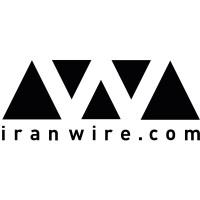On Wednesday, May 16, protests in the city of Kazerun in Fars province turned bloody when police and security forces began firing shots into the crowd. The demonstrations followed on from similar violent protests in April, as residents rallied to voice their anger at plans to split the county, also called Kazerun, into two new counties. The incidents suggest just how quickly local protests can take on national significance.
People have sent eyewitness accounts documenting the violence, including video footage, to IranWire and other media outside Iran. Some Iranian media have also reported on the riots.
In addition, people have posted videos on social media claiming to document the unrest in Kazerun, which is west of Shiraz. Unconfirmed reports say that protesters attacked a police station and surrounded a number of government buildings. According to these reports, several people were injured and at least three of the protesters were killed.
Protesters shouted out various slogans during the rallies — “State Radio and Television Should be Ashamed,” “The Government Supports Gazans, But Betrays Kazerun,” and “Our Enemy is Here, not in the US” among them.
Protests of various kinds have been going on since the summer of 2017, then grew more intense in April. Despite pleas from provincial officials and the Friday Prayers Leader, and in apparent defiance of an increased police presence on the streets, on Friday April 20, demonsrators unexpectedly occupied the site for the city's Friday Prayers. They chanted in protest against prayer leader Mohammad Khorsand and called for his resignation. They also chanted political slogans against the government, the Islamic Republic and their representative to the parliament.
The protests caught the attention of the media and social networking sites because some of the protesters' chants were very similar to those used in the demonstrations that spread across the country in early January 2018 — suggesting a deeper, more widespread malaise. Some people shouted: “Our enemy is right here; liars say it is America,” but there were other, more shocking slogans too, including “Be afraid when we get guns” and “We will kill the traitors.” This readiness for violent confrontation is new, and had not been a feature of earlier rallies.
Bahram Parsaeinejad, a member of the parliament from Fars province, said the protests in Kazerun were the “same protests we see in other parts of the society.” He said the majority of people going out on the streets were not doing so out of opposition to administrative boundaries—they wanted to be heard on more wide-reaching issues. “People are protesting in response to their financial and employment situation,” he said.
In a memo published on April 21, Parvaneh Salahshouri, a representative from Tehran, sounded the same note. “The responsible authorities, whether they accept it or not, are on one side and people are on the other side,” she wrote. “We can see proof of this in Isfahan and Kazerun and many other places. We must be aware that for years now people have been under pressure and these [protests] amount to acts of civil disobedience.”
On April 21, Eshagh Jahangiri, Rouhani’s First Vice President, demanded that a solution be found so that the Kazerun protests would come to an end. “You cannot have people come to the streets every day so that some people are able to exploit it and chant their own slogans,” he said, suggesting that people with less legitimate claims could hijack the demonstrations.
But the bloody protests in April showed a “solution” has yet to be found. And now the protests are back, and lives have been lost. A glance at the last 11 months suggests that the people of Kazerun have tried every peaceful tool at their disposal — rallies, strikes, petitions and pursuing the matter with both the media and politicians — but, in their view, authorities have refused to listen.
This article is adapted from a longer version published originally by IranWire.






